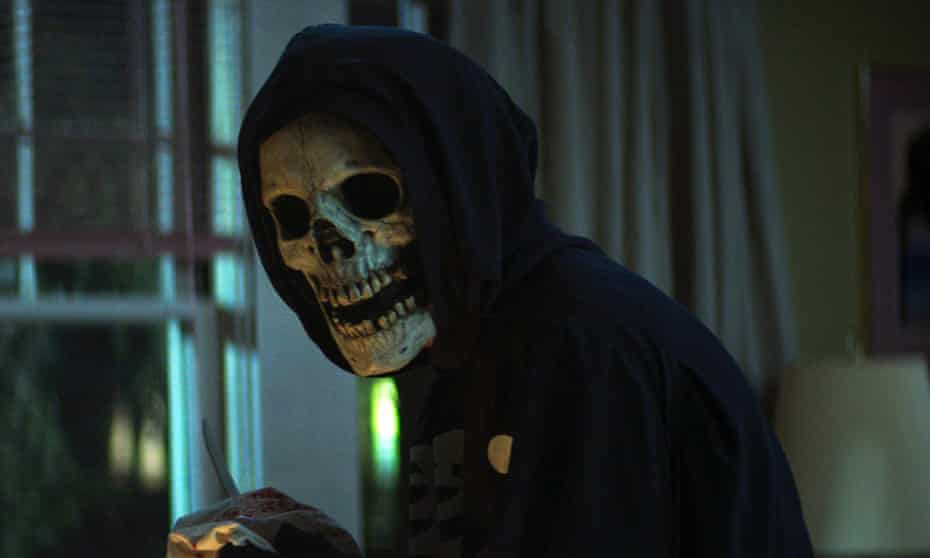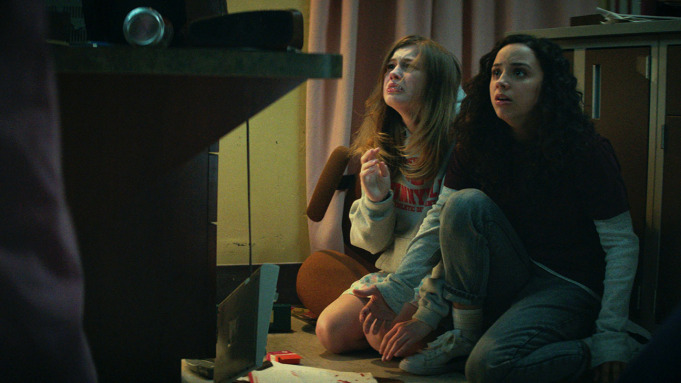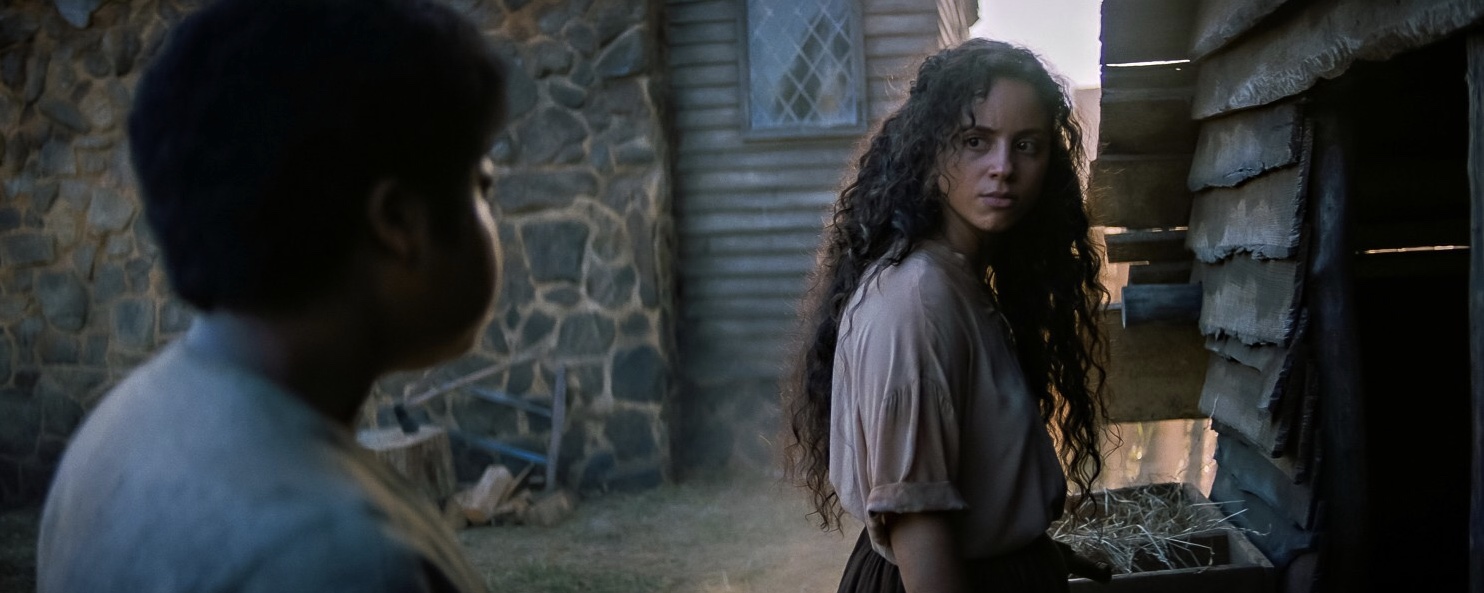In its history as a streaming giant, Netflix has been at the forefront of imagining new ways for us to consume content, often at the expense of the sacred cows upon which the entertainment industry was built. Episodes of television need not fit neatly into a half-hour or hour-long package; television shows can have the feel of movies, and movies the feeling of TV. Nowhere is this hybrid approach more evident than a trio of new horror films based on the writings of R.L. Stine, which have been released to the streaming service at intervals a week apart this July. They’re movies, to be sure – none is shorter than 107 minutes – but they also sort of behave like TV, with the second and third starting with a recap and the words “Previously on Fear Street.”
If categorisation doesn’t matter to you, then neither does this whole preamble probably. Also, if you assumed Stine’s work was supposed to be for kids – the Goosebumps series is his most well-known output – then you better reconsider that as well. Fear Street Part One: 1994, Fear Street Part Two: 1978 and Fear Street Part Three: 1666 shouldn’t likely be watched by any children under the age of, say, 22, so gory are the butcherings depicted here. But hey, the movies feature characters who are supposed to be teenagers, so audience members around that age will surely take an interest.
The project has been entrusted to director Leigh Janiak, who walks us through a three-part horror saga about a witch who has put a curse on the town of Shadyside. Right off the bat, you’ll notice something different from the horror movies of the periods in the title – or set in that period, since movies didn’t exist in 1666 – that the Fear Street series is uncannily imitating. That’s that the main love story is between two girls, and it’s a reminder that gay themes have rarely found their way into the slasher genre. It’s about time that changed, and Janiak is the one to do it.
Taking a lead from the rule-breaking streaming company, I’ve decided to break my own usual format and review all three films at once, and since I’m not big on outlining what I plan to say before I say it, I’m not yet sure how it will go. However, if Netflix can blaze trails, so too can this humble critic.
Commendable social messaging aside, Fear Street is first and foremost a style exercise. The first chapter with its 1994 subtitle will plunge you immediately into the self-referential realm of Wes Craven’s Scream, which came out two years later, if we’re splitting hairs. The expensive soundtrack (Netflix never lets you forget it’s got the big bucks) is almost slavishly devoted to the hits of 1994, as we see a masked killer get all stabby with a bunch of teenagers at a mall. It may stop short of a full Scream homage – the characters don’t spend any time talking about horror tropes, for example – but everything else screams Scream, as it were. There are two characters vying to be the “final girl,” and they happen to be in love. That’s Deena (Kiana Madeira) and Sam (Olivia Scott Welch), and they can’t quite be public about their romance in a town of assholes and douchebags.
There may be a reason the town is this way. Legend has it that a witch named Sarah Fier cursed the town after she was hanged, which has led to a series of possessed townspeople suffering mental breaks and killing a dozen of their neighbours at regular intervals over the past three centuries. You’d think this would be enough to pick up stakes and live elsewhere – the neighbouring town of Sunnyvale has no such history – but that either hasn’t occurred to these people, or maybe they just can’t. After all, the same family names still persist from puritan times, such as the Goodes, whose current generation includes the town sheriff, Nick (Ashley Zukerman).
While the decision to start with 1994 and move backwards pays dividends as the films unfurl, it often feels like an awkward place to start. The Sarah Fier back story, when first suggested as a possible explanation for the latest killing spree, is tossed off in the excited chatter of 1990s teenagers, having about the credibility of a breathless YouTube video. It almost feels like a screenwriting placeholder, as if there has to be a big picture story to justify all this carnage and mayhem. The similarity of the story to Stephen King’s It, which just had two big and wildly successful cinematic incarnations, weakens the sense that Fear Street is on the path to anything distinctive.
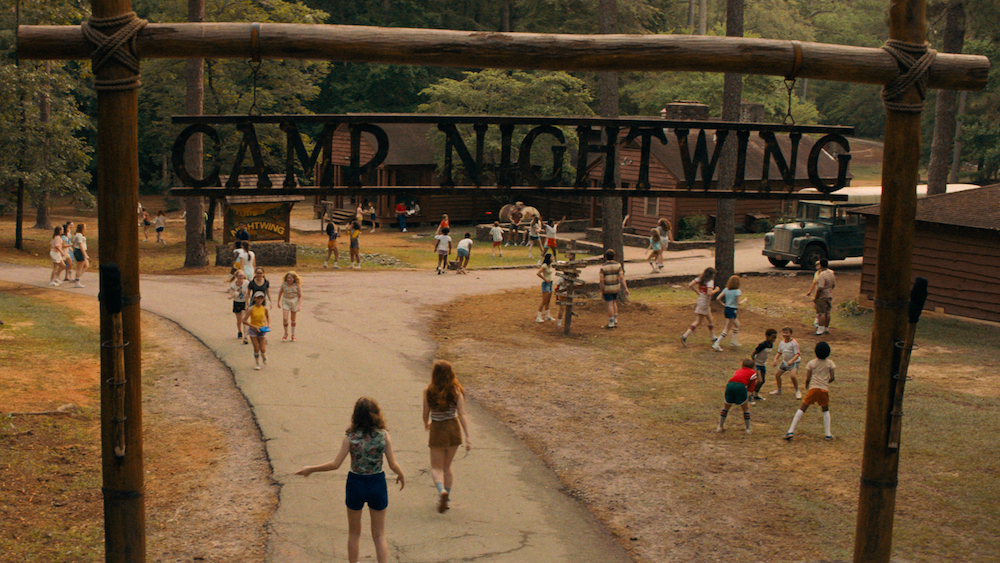
Fortunately, this is where Fear Street Part Two: 1978 steps in. Now Janiak is referencing the successful horrors of that era, specifically Friday the 13th, as this next series of murders, 16 years in the past, are taking place at the town camp, called Nightwing. The expensive score effortlessly transitions to late 1970s hits, reframing some of our earlier assumptions that Janiak was just taking a self-indulgent trip down memory lane to her own 1990s youth. If she were comfortable with the Scream style, she seems even more comfortable parroting Friday the 13th or Halloween, and since that type of horror has arguably greater aesthetic virtues, so does Fear Street Part Two. Now the stars are a pair of sisters, Ziggy and Cindy Berman, played by Stranger Things’ Sadie Sink and Emily Rudd, respectively. They’re trying to survive a camp counsellor who’s gotten a far off look in his eyes and picked up an axe.
But we’re not done yet. The third film goes back to the origins of Sarah Fier, this time finding its closest horror corollary in something like Robert Eggers’ The Witch. This too is a really credible version of the material inspiring it, and the score has been replaced by strings and other instruments that existed at that time. Plus the cast of the first two films, some of them long since axed or put through a meat slicer, appear in the roles of the 17th century townspeople, further solidifying the cyclical nature of the evil these families do to each other through the generations.
Fear Street benefits immensely from our ability to see its larger design, improving with each instalment. The underlying story is never particularly original, but as it is placed in conversation with the lesbian love story at the centre of the trilogy, it becomes increasingly profound. In fact, without putting too fine a point on it, the series argues for tolerance as a way to destroy all curses.
It would be a mistake not to mention the role the cast plays in all this. In what is probably best described as the series’ leading role, Madeira has a real presence and authority, her eyes intensely focused in an arresting fashion. As the movies progress, we get to see additional range from her that 1994 does not preview. Sink has total command of her charisma, something that’s evident on Stranger Things and even more so as she grows into an adult. Other casting choices have a real specificity that works for the material, particularly the 70s camp counsellors played by McCabe Slye and Ryan Simpkins. Then just to balance it all out you’ve got the veteran leadership of Gillian Jacobs, formerly of Community, as one of the few characters to straddle multiple movies at different ages.
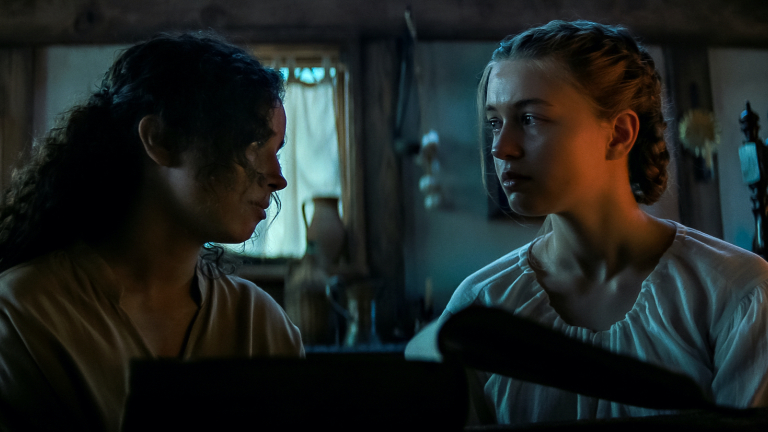
With the benefit of Netflix’ unlimited resources, Janiak may not be nearly as exhausted as it might seem at the end of 330 minutes of movies filmed during a relatively short time period. The fact that she is adjusting her technical approach to each film may be the most astonishing achievement here, but it is far from the only one. Fear Street is like a love letter to fans of all horror movies, and perhaps also to the viewers those horror movies have traditionally left behind: two teenage girls who have eyes for each other. May they go forward with a little less fear.
